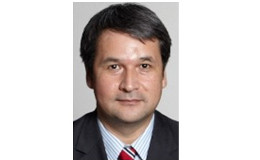The range is 15 cases per 100,000 in Alaska to 65 cases per 100,000 in Hawaii
A new study finds a wide state-by-state variation in rates of melanoma caused by ultraviolet (UV) exposure with highest rates in several states on the East and West Coast including Hawaii, but also a few landlocked states, including Utah, Vermont, and Minnesota. The report, appearing in the International Journal of Cancer, finds state-level incidence rates for UV-attributable melanoma ranged from 15 cases per 100,000 in Alaska to 65 cases per 100,000 in Hawaii. The authors say variations between states likely reflect a combination of the strength the sun’s rays, participation in outdoor activities, sun protection, indoor tanning, and early detection.
For the new study, investigators led by Farhad Islami, MD, PhD (pictured here) estimated the number, proportion, and incidence rates of malignant melanomas attributable to UV radiation in each state. They did so by calculating the difference between observed melanomas during 2011-2015 and a baseline of expected cases.
Estimating the contribution of UV exposure required a novel approach. Without a population completely unexposed to UV radiation, researchers used the best data available: historical melanoma incidence rates from 1942-1954 in Connecticut, which had the country’s first statewide population-based cancer registry and is in a high-latitude (generally lower UV rate) environment. For most adults, melanomas diagnosed during those years likely reflected UV exposure accumulated in the 1930s or earlier, when exposure was minimized by clothing style with more complete skin coverage and limited recreational exposure. This reference population acted as the theoretical minimum UV exposure.
UV-exposure accounted for 91.0% (338,701/372,335) of the total melanoma cases diagnosed during 2011-2015 in the United States; 94.3% (319,412) of UV-attributable cases occurred in non-Hispanic whites.
To highlight state differences, researchers highlighted results for non-Hispanic whites rather than the total population, because a lower burden in some states could largely reflect higher proportions of non-whites in the population. Melanoma incidence rates in the United States are lowest in blacks (1.0 per 100,000) and are also substantially lower in other minorities (e.g., 4.5 per 100,000 in Hispanics) than in non-Hispanic whites (27.2 per 100,000).
By state, the attributable age-standardized rate among non-Hispanic whites ranged from 15.1 per 100,000 in Alaska to 65.1 in Hawaii. Multiple states along the East and West Coast had UV-attributable incidence rates exceeding 25 per 100,000 among non-Hispanic whites: Delaware (37.1), Georgia (36.5), California (33.8), Maryland (32.6), North Carolina (29.5), Florida (29.2), Oregon (28.5), South Carolina (28.1), Washington (27.8), New Jersey (27.7), New Hampshire (26.5). Rates were also above 25 per 100,000 in Alabama (25.4) and several landlocked states: Utah (40.4), Vermont (31.4), Minnesota (27.9), Idaho (27.6), Kentucky (25.7), and Colorado (24.5).
In addition to states with a high UV index like Hawaii, California, and Florida, UV-attributable melanoma rates are high in many states with relatively low UV index, such as Minnesota and Idaho, likely reflecting high prevalence of outdoor activities (e.g., going to beaches, lakes, or outdoor swimming pools; recreational boating; skiing; and perhaps occupational activities such as farming) and insufficient sun protection. Many UV-related melanomas are preventable using appropriate measures.
The report also finds higher UV-attributable melanoma burden in younger females than males. “High indoor tanning prevalence among teen girls in the late 1990s is likely a contributing factor,” said Farhad.
Article: Cutaneous melanomas attributable to ultraviolet radiation exposure by state; Int J of Cancer 2020; doi 10.1002/ijc.32921

*Re-posted from MySocietySource.

No comments:
Post a Comment